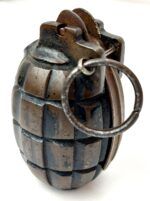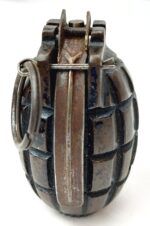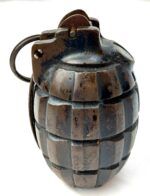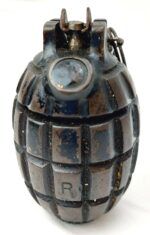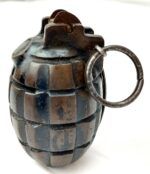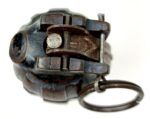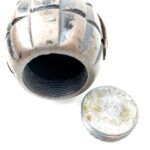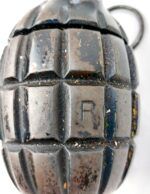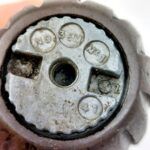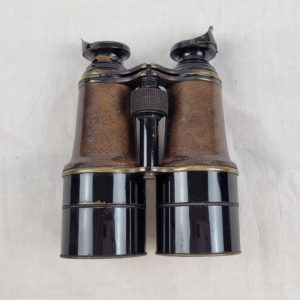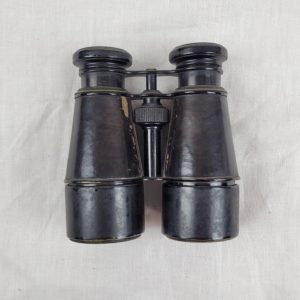*British, WW2, No.36M MK1 “Mills Bomb” Grenade, “Mesopotamian” variant, Dated 1941, Inert*
Marked on the base: “No.36M MK1. 41”. Marked “R” on the body.
Measures approx 9.5cm tall, base 3cm diameter
The No 36 Mk I Grenade also known as the Mills Bomb, developed at William Mills’s factory in Birmingham, was introduced by the end of the First World War. Remaining the standard British fragmentation grenade until 1972, it was also utilized by Australian and other Commonwealth forces. This classic cast iron, grooved pineapple design features a central striker held by a closed hand lever and secured by a pin. The grenade’s perforated edges facilitated fragmentation into numerous pieces upon detonation, inflicting maximum damage. Soldiers were instructed to throw Mills bombs akin to bowling cricket balls. It has a time delay of 4 or 7 seconds depending on the version. On the Great War battlefields, the Germans sometimes returned the British grenades with a delay of 7 seconds. A competent thrower could manage 15 metres (49 feet) with reasonable accuracy, but the grenade could throw lethal fragments further than this. The British Home Guard were instructed that the throwing range of the No. 36 was about 30 yards with a danger area of about 100 yds. The segmented body design, characteristic of the No 36 grenade, ensured uniform fragmentation and was adopted in various other grenade types, including those intended for rifle firing.
The Mills bomb underwent numerous modifications. The No. 23 was a variant of the No. 5 with a rodded base plug which allowed it to be fired from a rifle. This concept evolved further with the No. 36, introduced in May 1918, a variant made of iron with a detachable base plate to allow use with a rifle discharger cup. The final variation of the Mills bomb, the No. 36M, was specially designed and waterproofed with shellac for use initially in the hot climate of Mesopotamia in 1917 to keep moisture and humidity out of the detonator’s fuse. By 1918 the No. 5 and No. 23 were declared obsolete and the No. 36 (but not the 36M) followed in 1932. The No. 36M MkI was the British army’s standard hand-grenade from the 1930s to 1972.
*Condition*
This inert grenade is in excellent condition. Please see photographs as part of the condition report.
JAQABEXBOO_4134151762











